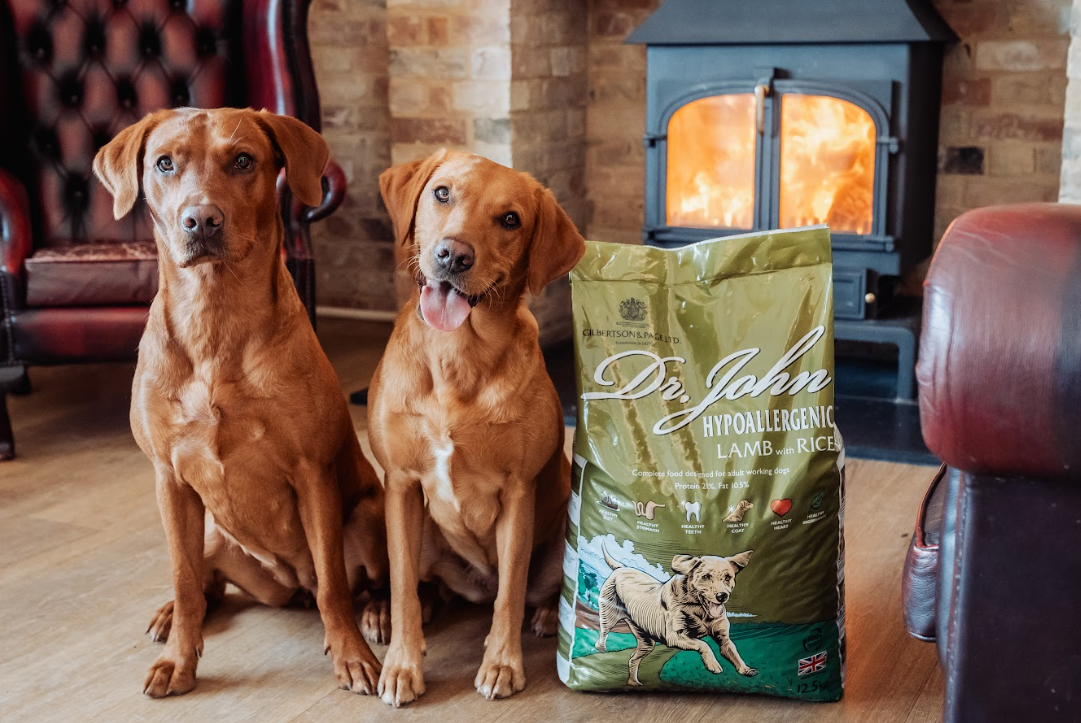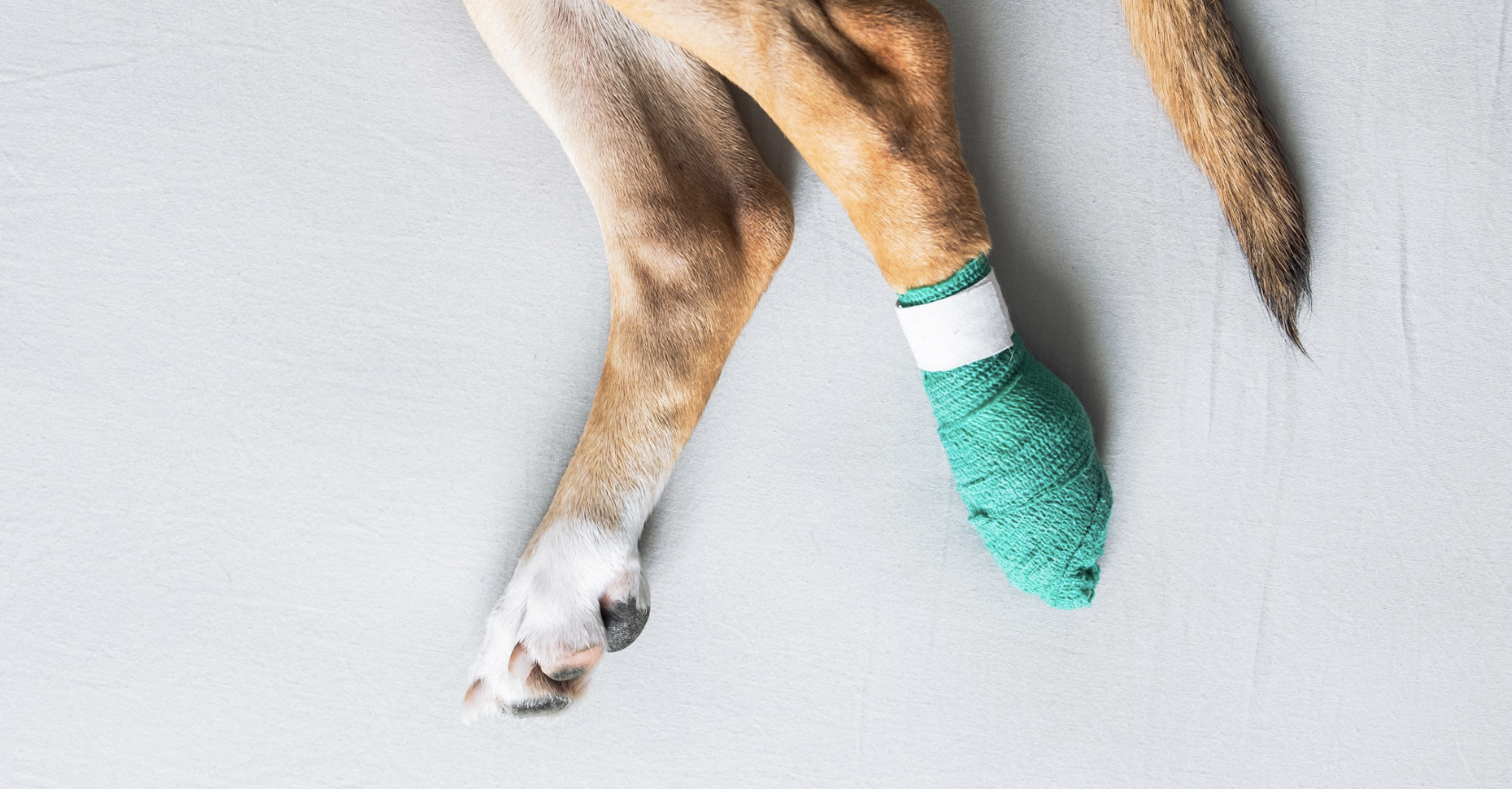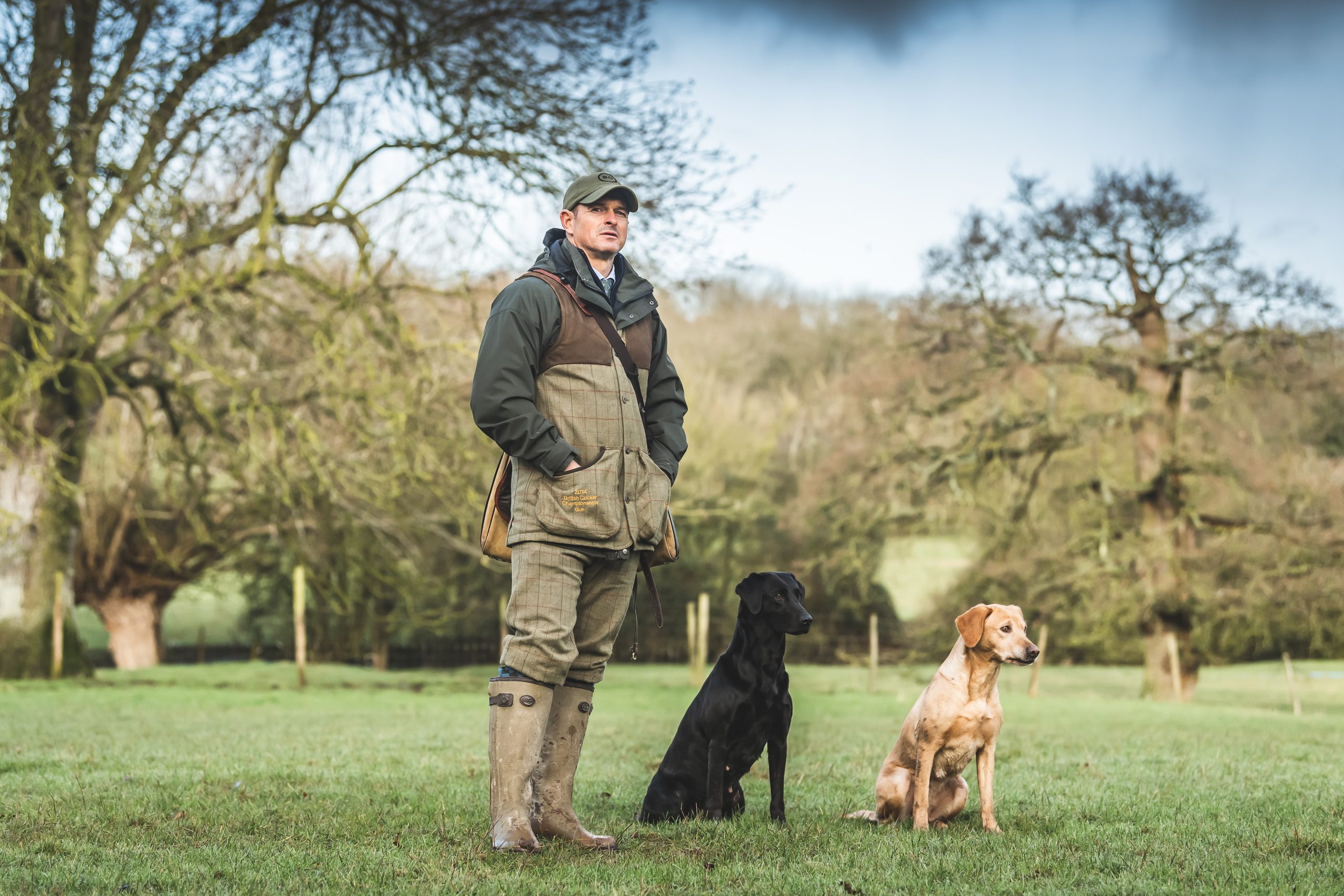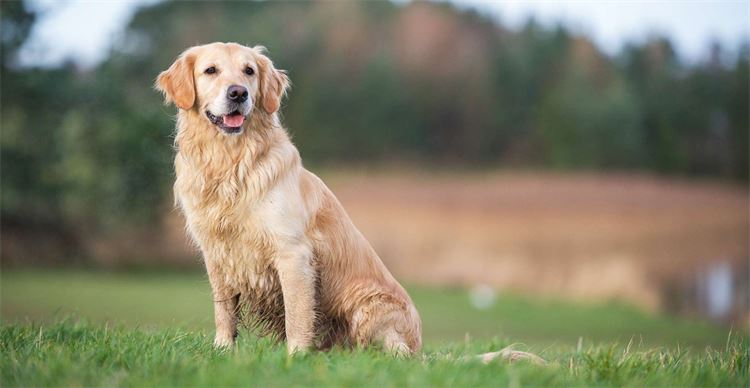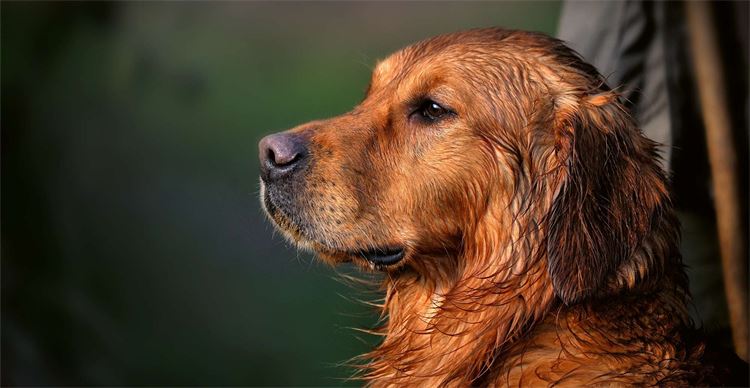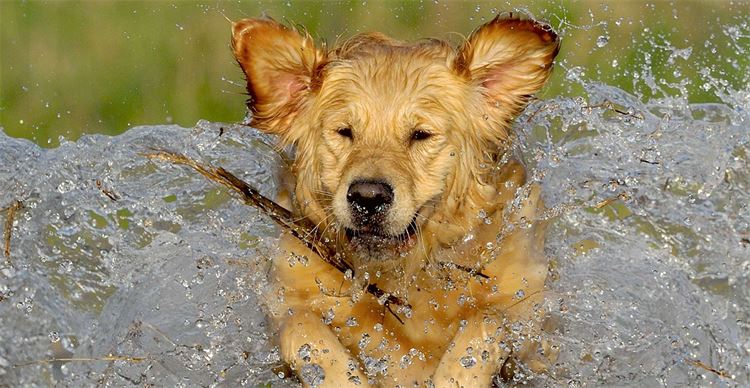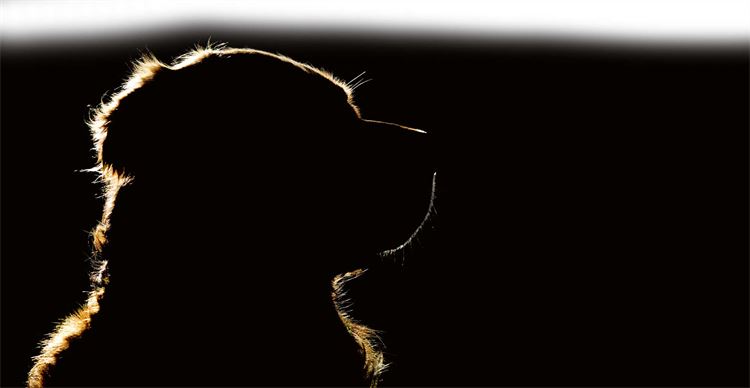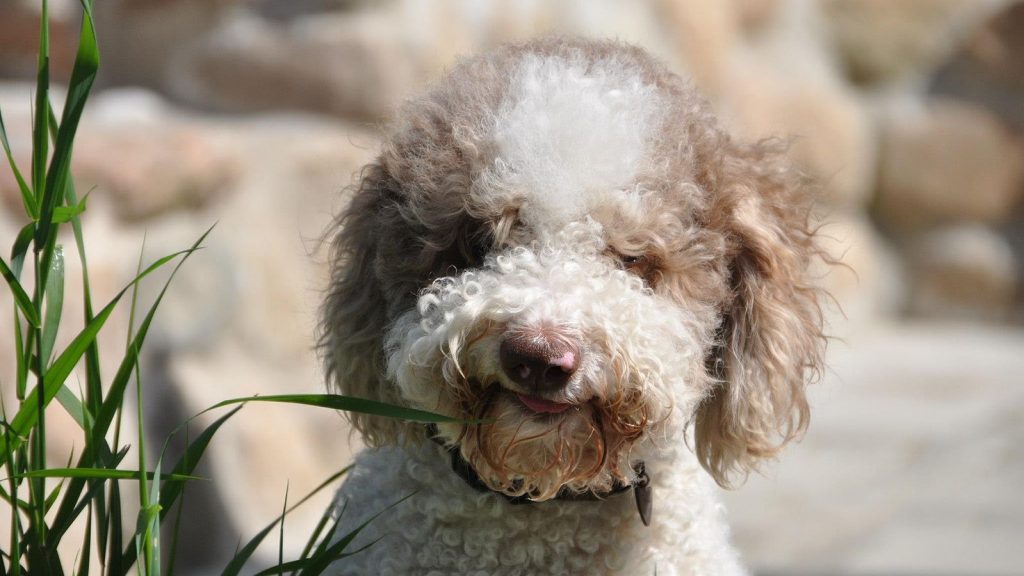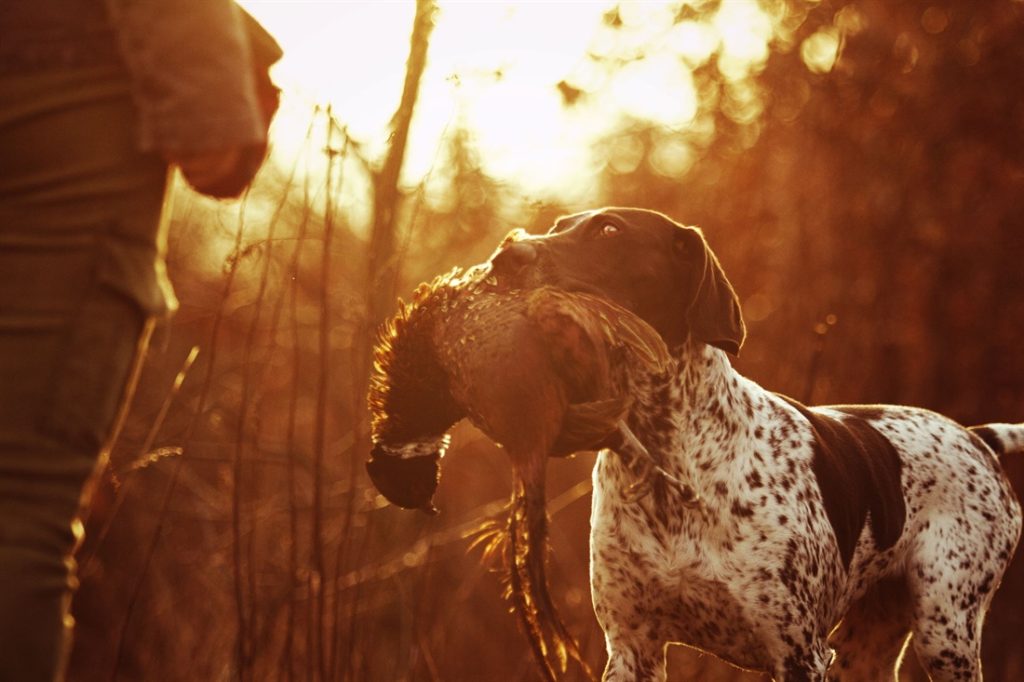The Secret To Golden Retrievers
Golden retrievers have a charm all of their own, as Patrice Fellows reports.
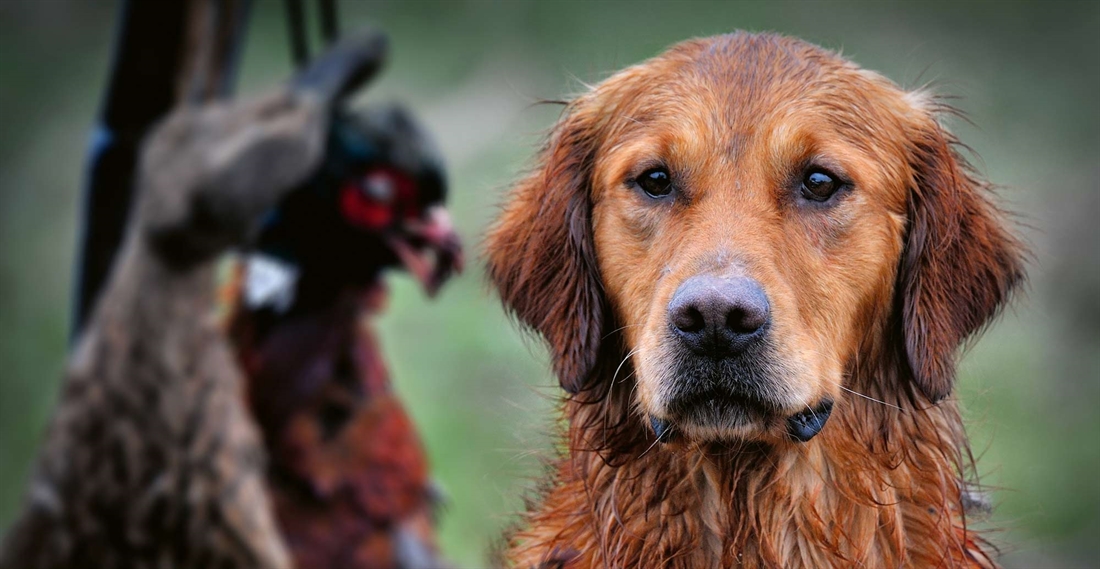
Photography / STEVE MAGENNIS
One of Britain’s best-kept secrets is the quality of its working Golden Retrievers. Since their foundation in mid-19th century Scotland, these attractive retrievers with a keen desire to work in both cover and water, and famously soft mouths, have contributed massively to shooting.
Although not as common as the ubiquitous Labrador, goldens have made up for the disparity in numbers by the quality of their contribution to the field. And at the highest level – the annual IGL Retriever Championship – they have attained top awards.
As the late Keith Erlandson said, “A good golden is second to none… and I believe a top specimen can actually be superior to the very best labrador, but I will admit that such dogs are very thin on the ground.”
Golden Retrievers Were Born In The Highlands
In the mid-19th century, wildfowling was popular among the Scottish landed gentry, and improvements in firearms enabled fowl to be shot over longer distances and more difficult terrain. As a consequence Sir Dudley Marjoribanks, the first Baron Tweedmouth, developed a vision of a specialist retriever to meet these requirements.
In 1865 he bought a pup named Nous from a cobbler in Brighton, the only yellow dog in an unregistered litter of black wavy-coated retrievers. Three years later he crossed Nous with a Tweed water spaniel named Belle; this mating produced four yellow pups that became the foundation of the breed. In later generations he added Irish setter, bloodhound, St John’s water dog of Newfoundland and two more wavy-coated black retrievers.
Through a combination of line breeding and judicious crosses he attained his ideal companion: a powerful retriever that was also gentle and trainable. His Highland estate and line of Guisachan Retrievers are honoured today as the home and foundation of the breed.
For almost 50 years the breed remained little known; as Lord Tweedmouth developed his bloodlines he kept some puppies, gave some to keepers in nearby estates and gave others to friends and relatives.
This changed in 1908 when a friend of the family, Viscount Harcourt, exhibited the first golden under the affix Culham at a Kennel Club event. He was joined by Mrs Charlesworth the next year, who exhibited the offspring of her bitch Normanby Beauty, a highly intelligent and tireless worker. Eight goldens were exhibited at Crufts in 1909, all registered as yellow flatcoated retrievers.
Golden Retrievers Recieve Their Own Separate Variety
In 1913, the Kennel Club registered the breed as a separate variety called Golden or Yellow Retriever, and in 1920 Golden Retriever became the official designation. A small group of enthusiasts formed the Golden Retriever Club in 1913, which has grown to over 2,000 members across the world today. It is joined by 12 regional breed clubs in England, Scotland and Wales, as well as 14 breed rescue organisations scattered throughout England.
Many early breeders competed both on the bench and in the field, but today most dogs are divided into show or working strains. There are, however, a handful of dual-purpose breeders that continue to pick up or shoot over their goldens. These dogs may not compete at the highest levels, but they more than prove their worth in the field.
From the beginning Golden Retrievers have maintained a strong presence in field trials, winning the annual IGL Retriever Championship four times. The 1950s were an especially strong decade for the breed: in 1952 Jean Lumsden’s FTCh Treunair Cala won at Six Mile Bottom, followed by June Atkinson’s FTCh Mazurka of Wynford in 1954. Mazurka went on to win three more awards, including second place. There have been more than 100 FTChs in the history of the breed, and many have won any variety as well as single-breed stakes.
Characteristics Of The Golden Retriever Breed
The Golden Retriever is one of seven breeds comprising the retriever gundog group. It is considered intelligent, kind, gentle and confident.
One of the most adaptable of the sporting breeds, it can carry out many tasks in addition to its original purpose in the field. With its kind and patient nature it is an ideal choice for families with children, making them better suited to living in the house than in kennels. They are typically friendly with other dogs, pets and livestock, as well as people.
A common question is, are Golden Retrievers smart? They are widely used as disability assistance dogs, such as guide dogs for the blind and hearing dogs for the deaf. They excel in obedience training at all levels and can be trained for work in numerous disciplines, including detection, search and rescue, and lifesaving. They are also consistent top performers in agility, obedience and working trials.
The size of Golden Retrievers can vary from medium to large, and they are strongly built with a balanced body and powerful gait. They have a broad skull and powerful muzzle, black nose, round dark eyes and moderate sized ears. The dogs stand about 22–24″ at the shoulder and females slightly less at 20–22″. Their topcoat is medium length and slightly wavy or flat with good feathering and a dense undercoat, which keeps them cool in summer and warm in the winter. Any shade of gold or cream is permitted, with some white on the chest.
Working Golden Retrievers are generally lighter in build and more athletic than show varieties, with a shorter coat suited to working in the field. With dark yellow to reddish-gold coats, they look more like their early ancestors. When the first breed standard was written in 1911, cream was not permitted as a coat colour, and throughout the 1920s very dark dogs were favoured. As lighter shades became more popular the breed standard was modified in 1936 to read “any shade of gold or cream, but neither red nor mahogany”.
Health And Care
Adult goldens need up to two hours a day of exercise as well as mental stimulation. Their coats shed copiously, especially at the change of seasons twice a year. To reduce the amount of shedding it’s a good idea to groom Golden Retrievers frequently – even on a daily basis. With puppies this will entail just brushing, but with working adults it will be necessary to check for burrs, knots and tangles, and to keep their feet trimmed with scissors.
Like other pedigree dogs, goldens are prone to a number of hereditary conditions. There are currently three health schemes offered by the British Veterinary Association in conjunction with the Kennel Club. Although breeding stock is screened under these schemes, there is no guarantee that pups will be clear, although the likelihood is increased.
Under the eye scheme, dogs are examined annually for three hereditary eye conditions: Hereditary Cataracts (HC); Progressive Retinal Atrophy (PRA); and Multifocal Retinal Dysplasia (MRD). There is also a DNA test available for GPRA-1 and GPRA-2.
Breeding stock should also be x-rayed for hip and elbow dysplasia. These are multifactorial conditions influenced by genes, nutrition and exercise, so always follow the advice of breeders in the care of a young pup, even if its parents have good results.
According to the Kennel Club’s latest health survey, the average lifespan for Golden Retrievers is 12 years. Cancer is one of the main causes of death. Aside from the hereditary conditions listed above, goldens can also suffer from skin problems and allergies, ear infections, epilepsy and thyroid conditions.
Training Golden Retrievers For The Field
Golden Retrievers require one to two years of training and preparation for the field. The focus of training is to produce a dog that’s steady to its handler whilst being shot over, until it is given the command to retrieve dead or wounded game from land or water and deliver it tenderly to hand.
Unlike spaniels, a retriever is not required to quarter ahead to quest and flush live game, although some people use retrievers in the beating line or for rough shooting.
Formal training for Golden Retrievers doesn’t usually begin until at least six months, and often much later. Early days focus on obedience commands, steadiness and walking to heel, single marked and memory retrieves, as well as hunting in a restricted area. Once basic skills and control are established, more advanced dummy work incorporating multiple or blind retrieves, handling at a distance with whistle and voice commands, water, gunshot and obstacles are introduced.
Once these skills are mastered, there is a transition period of working with cold game before the first introduction to the field. A young dog might spend its first season sitting up at drives or walking to heel while other dogs are sent for retrieves, with a reward of a few birds at the end of the day.
Throughout the process, the emphasis is on acquiring new skills on a step-by-step basis to encourage success, simplifying and backtracking whenever necessary. Harsh handling is never advised, especially in the case of goldens, who are sensitive and prone to stubbornness when treated with force or coercion.
Working Tests
If you’d like to find out more about what Golden Retrievers can do, it’s worthwhile to attend some game and country fairs, where you can attend demonstrations, talk to breed experts and participate in scurries.
During the off-season, Golden Retriever clubs and gundog societies hold retriever gundog working tests (GWTs), which seek to further good gundog work without live game. GWTs are divided into puppy, novice and open categories, and each club publishes its entry rules on its website.
Three or four tests simulate varying shooting scenarios requiring single and double retrieves, blind retrieves, hunting in an area, walking-up and retrieves in or near water. Judges evaluate the dogs’ game-finding ability, crediting quick pick-ups and fast returns, nose, marking ability, quietness in handling, control, drive and style.
Field Trials for Golden Retrievers
Retriever field trials have grown immensely in popularity in recent years and are usually oversubscribed. They are attended by both amateur and professional handlers who wish to make up their dogs to field trial champions and qualify for the annual IGL Retriever Championship, so the pressure is on not to take someone else’s place.
That said, it is still primarily an amateur sport, open to anyone willing to take on the required commitment.
Golden Retriever field trials are run as closely as possible to an ordinary shooting day. If feasible, they are conducted on ground where dogs can be tested walking in line to heel in roots or cover and waiting off the lead at drives, but the day may consist of just one or the other.
In August a few trials are held on grouse moors in the north, and in September there are some walk-up days on partridge. The majority of trials are held in October and November as walked-up or driven days over partridge and pheasant, leading up to the annual IGL Retriever Championship at the end of November.
Most trials are held under a four-judge system, where pairs of judges evaluate the performance of the competitors, working down the line in numerical order. In the first round, dogs are usually sent for two retrieves each, and can be discarded for a variety of misdemeanours such as running-in, chasing, whining or being eye-wiped by the judges or another competitor.
Dogs that survive are called up for further rounds until the top few dogs remain, at which point the judges confirm the final placings with a run-off, usually working all together at the centre of the line.
Why Not A Golden?
With so many attributes, it’s a mystery why more people don’t own working Golden Retrievers. One major drawback is the extra care and attention their coat requires. They are large dogs and prone to getting dirty, especially in the field. Burrs and tangles must be dealt with – and not just brushed aside, so grooming your Golden Retriever is an important daily task.
Another drawback for some people is they do not make good kennel dogs. Sarah Gadd, a prominent trialler who started out with both goldens and labradors, gave them up for this reason. “I enjoyed running goldens in the early years. But in my experience, goldens mature more slowly and they don’t kennel quite the same as labradors.” Other owners – like the late legendary June Atkinson of the Holway affix – have found a way around this by adopting a more informal arrangement, like large enclosures for groups of dogs.
Compared to some other breeds, it’s harder to find a puppy or part-trained dog. While show-bred Golden Retrievers are very popular, working kennels are few and far between. It’s often necessary to put your name on a waiting list if you’d like a pup of good working stock with certified health results.
Finally, there is the issue of training your Golden Retriever. Although the breed is considered biddable and easy to train, it is sensitive and perhaps not as resilient to handler mistakes or short cuts as the labrador.
Derek Freeman, former breeder and trainer for Guide Dogs for the Blind, explained: “It is a breed which is easily offended and when their generosity or willingness is withdrawn, it can sometimes be difficult to restore.”
Passionate Advocates For Golden Retrievers
Be that as it may, the distinct qualities of the working golden have been more than vindicated by its passionate advocates. Captain HFH Hardy, who won the first field trial award for the breed in 1911, favoured them amongst all gundog breeds. “I do like them best of all,” he wrote. “I find them easy to train and to manage, good trackers of wounded game, and excellent at water work.”
The late author Graham Cox – another committed advocate – wrote: “Good goldens, like gold-dust, may be harder to find amongst the more numerous retriever breeds. In order to achieve success, you have to have a feel for what makes them so distinctive.”
If you are short of time or patience, then this may not be the right breed for you. But if you are definitely up to the challenge, and willing to learn the secrets to their success, gold-dust beckons.
Dog Breed Overview: The Golden Retriever
Group: Retriever
Physical traits: Large attractive dog, strongly built, balanced body and powerful gait. Broad skull and powerful muzzle, black nose, dark eyes and moderate sized ears. Medium length coat with feathering in any shade of gold.
Character: Intelligent, kind, gentle, playful, biddable and confident. Ideal for families with children. Usually friendly with other dogs and animals and likes people. Easy to train and adaptable to many jobs as well as work in field. Slow to mature, sensitive and at times stubborn if treated harshly.
Daily care: Requires up to two hours of daily exercise and mental stimulation. Coat requires daily or frequent grooming. Basic obedience and gundog training recommended.
Health: A healthy breed. Average lifespan of 12 years. Three BVA/KC health schemes recommended for breeding stock: annual eye tests (HC, PRA and MRD); x-rays for hip dysplasia; x-rays for elbow dysplasia. Prone to cancer and skin ailments.
At work: Tireless worker with a good nose and excellent in cover and water. Also a good tracker of wounded game with a soft mouth. Well-suited to field work as a peg dog, picking up or wildfowling. May be used for beating or rough shooting. Trained for many other jobs, such as assistance, detection and search and rescue. Top performer in obedience, agility and working trials.
More Information About This Gun Dog Breed
We love sharing our trusted resources, the more we learn about each breed the better we are able to take care of our beloved dogs. Below we have listed some of our favourite websites and books used to create this article and to learn more about this fantastic gun dog breed. Take a look at some of these resources:
- www.thegoldenretrieverclub.co.uk
- www.thekennelclub.org.uk
- The New Complete Golden Retriever by Gertrude Fischer
- All About the Golden Retriever by Lucille Sawtell
- The Complete Guide to the Golden Retriever by Michael Twist
- Training the Working Retriever by Anthea Lawrence
- Gundogs: Training and Field Trials by PRA Moxon
Related Articles
Get the latest news delivered direct to your door
Subscribe to Gundog Journal
Unlock the full potential of your working dog with a subscription to Gundog Journal, the UK’s only dedicated magazine for gundog enthusiasts. Published bi-monthly, this authoritative resource delivers expert training advice, in-depth interviews with top trainers and veterinary guidance to help you nurture a stronger bond with your dog.
With stunning photography and thought-provoking content, Gundog Journal is your essential guide to understanding, training and celebrating your working dog.
Save 10% on shop price when you subscribe, with a choice of packages that work for you. Choose from Print & Digital or Digital only with each journal delivered directly to your door or via the app every other month, plus access to past issues with the digital back issue library.



